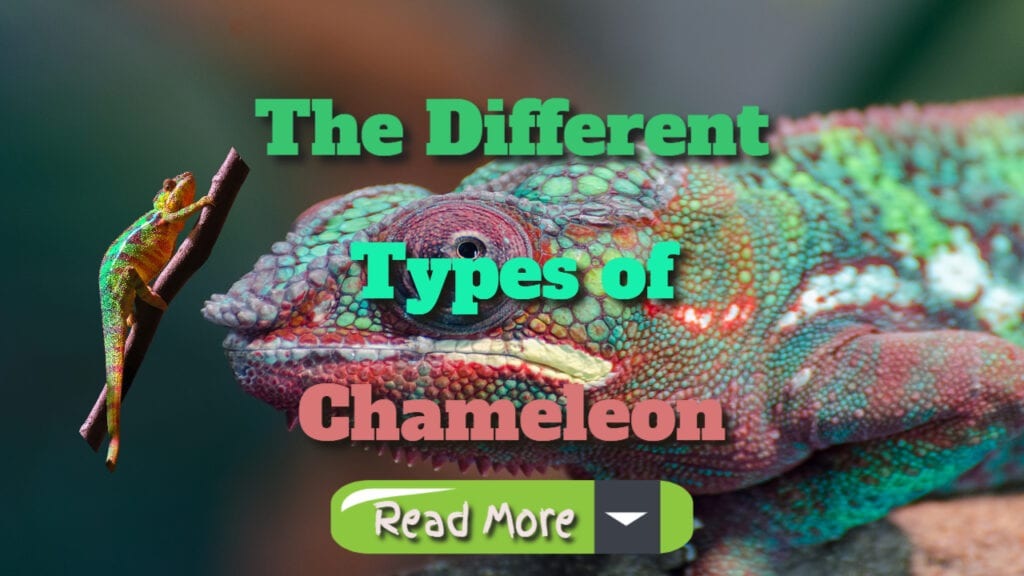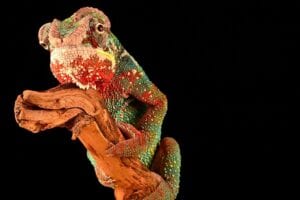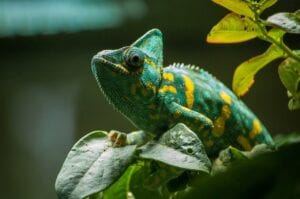Navigate Through Our Comprehensive Chameleon Guide
- Explore the Diverse Types of Chameleons
- Essential Tips for Selecting a Healthy Chameleon
- Key Factors to Consider When Purchasing a Chameleon
- Visual Guide: 70 Types of Chameleons and Their Unique Features
- Detailed Overview of the Carpet Chameleon (Furcifer lateralis)
- In-depth Look at the Three Horned (Jackson’s) Chameleon
- Characteristics of the Natal Midlands Dwarf Chameleon
- Insights into Marshall’s African Leaf Chameleon
- Discover the Nosy Be Pygmy Chameleon
- 11 Chameleon Species Perfect for Pet Owners
- 17 Fascinating Types of Geckos: Our Top Picks for Pets!
- Identifying the Best Chameleon Species for Your Home
Explore the Diverse Types of Chameleons
Understanding the specific care requirements for each type or breed of chameleon you intend to acquire is crucial in ensuring your new pet thrives in its environment. Being well-informed will enable you to choose a reputable source that has provided adequate care to the chameleons prior to their sale. While it might be tempting to rescue a chameleon that appears to be neglected, it’s essential to recognize that doing so may lead to adopting a sick or stressed animal. This not only affects your new pet’s health but also means another chameleon will likely fill the void left by your rescue. Therefore, it is vital to ask detailed questions about the care routines and conditions where the chameleons are kept and ensure that you purchase from a source that demonstrates knowledge and commitment to ethical care practices.
Lighting requirements can significantly differ among various chameleon species and the plants they coexist with. It is vital to determine whether your chameleon needs specific UVB lighting, which plays a vital role in vitamin D production necessary for calcium absorption. While some species, like dart frogs, may thrive without any UVB exposure, chameleons have precise UVB lighting needs that, if not met, could lead to severe health issues or even death. Conduct thorough research on the UVB requirements of your specific chameleon species, as there are various strengths and types of UVB bulbs available in the market. Selecting the right lighting setup can be a determining factor in the health and longevity of your chameleon.
Chameleons inhabit a wide range of environments, from mountainous regions to lush valleys and plateaus. They generally prefer warmer climates rich in vegetation, as these areas provide the necessary cover and resources for their arboreal lifestyle—meaning they spend most of their time living in trees rather than on the ground. This arboreal nature is common among most chameleon species. It is essential to replicate their natural habitat as closely as possible to ensure their well-being and promote natural behaviors.
Veiled chameleons are a popular choice among pet owners and can frequently be found in many pet stores. Their hardiness makes them an attractive option, especially for those who are new to chameleon care. However, it’s important to note that veiled chameleons require significant maintenance and attention to thrive, which is why they are often recommended for those with prior experience in caring for chameleons.
Essential Tips for Selecting a Healthy Chameleon
The bearded dragon (Pogona vitticeps), commonly known as the inland or central bearded dragon, is a semi-arboreal lizard species native to eastern and central Australia. These lizards are known for their climbing abilities and often perch on various surfaces such as tree trunks or rocky outcrops. In their natural habitat, bearded dragons thrive in environments abundant with plants, hiding spots, and caves. They are medium-sized reptiles, with some individuals growing up to an impressive length of about 28 inches, although such sizes are rare. The unique characteristics of bearded dragons, combined with their fascinating behaviors, make them a popular choice among reptile enthusiasts.
Key Factors to Consider When Purchasing a Chameleon
When it comes to housing your chameleon, a screen cage is particularly beneficial for owners residing in hot and humid climates. Glass cages can often trap heat and moisture, leading to stale air conditions that are detrimental to your pet’s health. Even frequent misting may not suffice to maintain a comfortable environment. If you plan to keep your chameleon outdoors, a screen cage is a much better option due to its lightweight design and ease of movement. Proper ventilation is crucial for the overall well-being of your chameleon.
Among the many species of chameleons that can thrive as pets, Fischer’s chameleon stands out as a unique option. Native to Tanzania, this species requires specialized care and is not commonly found in pet stores. If you are a first-time chameleon owner, it is advisable to consider a more readily available species. Fischer’s chameleons can grow up to 38 centimeters in length and are known for their vibrant coloration, making them a captivating choice for experienced keepers willing to invest the time and effort into their care.
Chameleons are fascinating reptiles, distinguished by their unique features and remarkable abilities. Despite some common traits shared by chameleon species, such as their tendency to be somewhat sluggish and shy, they are renowned for their incredible ability to camouflage themselves when threatened. For those considering adding a chameleon to their household, it is essential to familiarize yourself with all aspects of their care and maintenance before making a decision. Read more: everything you need to know before buying a chameleon.
Opt for a captive-bred baby chameleon for the best results. Avoid wild-caught individuals.
Both male and female chameleons have equal potential as pets.
Healthy female chameleons can lay eggs without health complications.
Purchasing from a reputable breeder provides valuable support and advice.
Veiled chameleons are hardy but may exhibit “cranky” behaviors.
Panther chameleons are well-supported species favored by many keepers.
Jackson’s chameleons are typically mild-mannered but require a drop in temperature at night.
House one chameleon per enclosure to prevent stress and territorial disputes.
Detailed Overview of the Carpet Chameleon (Furcifer lateralis)
Commonly referred to as the white-lined chameleon, this species predominantly hails from central Madagascar and belongs to the genus Furcifer. Males are typically green, while females exhibit a broader spectrum of colors and banding patterns. Carpet chameleons are relatively adaptable and tend to thrive when provided with the appropriate care and environment. They are bred and sold as pets across North America and globally, appealing to reptile enthusiasts with their striking appearance and manageable care requirements.
This article aims to help you identify some of the most distinctive chameleon breeds. These remarkable lizards, which spend their lives high in the trees, possess extraordinary adaptations that set them apart from other reptiles. With approximately 180 known species of chameleons inhabiting our planet, many of them boast the incredible ability to change the color of their skin. Popular species include Chamaeleo calyptratus, Chamaeleo jacksonii, Furcifer pardalis, Rampholeon brevicaudatus, Rhampholeon spectrum (small chameleon species), and Rhampholeon temporalis (pygmy chameleons). The growing interest in keeping these unique creatures as pets has led to the rise of species such as carpet, flap-necked, and Jackson’s chameleons among pet owners.
In-depth Look at the Three Horned (Jackson’s) Chameleon
Metabolic bone disease is a common health issue among chameleons, posing a serious risk if not addressed promptly. This condition causes a chameleon’s bones to weaken and become spongy, making them susceptible to fractures and other complications. To prevent this, it is vital to ensure that the prey food offered to your chameleon is rich in calcium and properly gut-loaded before feeding. Additionally, incorporating nutritious leafy greens (avoiding spinach, lettuce, and cabbage) and a variety of vegetables and fruits in small amounts can contribute to a well-rounded diet. Despite the ongoing debate over the ethics of keeping exotic pets, some experts argue that a reevaluation of current regulations is needed to better support responsible ownership.
Characteristics of the Natal Midlands Dwarf Chameleon
This unique species, found in KwaZulu-Natal, South Africa, is often referred to as the KwaZulu dwarf chameleon. Generally, they exhibit a brownish coloration with darker shades on their heads. Contrary to its name, the black-headed dwarf does not possess fully black heads. This captivating dwarf chameleon species only grows to about 3 inches in length, making it one of the smallest chameleons. Its distinctive multi-colored scales, along with a yellow head crest and white throat, set it apart from other species. Males of this variety proudly display an orange stripe, adding to their charm.
Insights into Marshall’s African Leaf Chameleon
Many chameleon species showcase unique nasal appendages that contribute to their distinctive appearance. A key distinction is made between true horns, which consist of a single enlarged scale on a bony projection, and false horns, which, while having a bony basis, are covered by regular skin scales. Real horns are prevalent among several African Trioceros species, while only false horns can be found in Madagascar. These nasal processes often arise from the fusion of the two rostral bone combs on the chameleon’s head, growing into a single feature at the front. An example of such nasal processes can be seen in Furcifer rhinoceratus.
Discover the Nosy Be Pygmy Chameleon
Recognized as one of the smallest four-legged animals in the world, the Nosy Be pygmy chameleon is a relatively recent addition to the chameleon family. Named after the Nosy Be forest in Madagascar, this tiny forest-dwelling chameleon is truly remarkable for its diminutive size, growing only to about ½ inch to just over an inch in height. Their small stature and unique characteristics make them an intriguing choice for chameleon enthusiasts.
11 Chameleon Species Perfect for Pet Owners
Panther chameleons are well-known for their vibrant colors and are frequently bred as pets. They typically reach lengths of 10 to 18 inches and can live up to 7 years with proper care. Their striking appearance and engaging personalities make them a favorite among reptile lovers.
Veiled chameleons (Chamaeleo calyptratus) are impressive and sizable reptiles native to the Middle East, particularly Yemen and Saudi Arabia. While they can be found throughout their natural habitats, these robust diurnal lizards have also gained popularity as pets in various regions. Caring for veiled chameleons requires specific knowledge and attention to detail, as their care needs may differ from those of other chameleon species.
We hope this guide has sparked your interest in the best types of chameleons suited for pet ownership. Their unique appearance, calm demeanor, and relatively manageable care requirements make them ideal companions for both novice and experienced reptile enthusiasts. If you believe there are additional species worthy of inclusion in our list, don’t hesitate to share! There is a vast array of chameleons to choose from, and we welcome your input!
17 Fascinating Types of Geckos: Our Top Picks for Pets!
Chameleons reproduce sexually, a fascinating aspect of their biology. When feeling threatened, they typically prefer to remain motionless to avoid detection. Different species, such as flap-necked, graceful, and Senegal chameleons, should be provided with appropriate feeding schedules. For instance, juvenile chameleons should receive 10 to 12 small crickets daily during their growth phase. Q: What types of insects are commonly fed to chameleons? Here’s a glimpse of my heavily gravid panther chameleons; females develop bright orange stripes when they are pregnant. The casque, present in both sexes, helps channel water that falls onto their heads into their mouths, showcasing yet another fascinating adaptation.
Identifying the Best Chameleon Species for Your Home
This guide begins by exploring the chameleon species most commonly kept as pets, followed by a categorization of wild species based on their genus.
Distribution: Saudi Arabia, Yemen, and surrounding areas
Adult size: 8-18 inches
Life expectancy: Males: 6-8 years; Females: 4-6 years
Veiled chameleons rank among the most sought-after species for pet ownership. This striking large chameleon is celebrated for its captivating behaviors and adaptability. Daily care is essential for maintaining a healthy veiled chameleon, as they require more attention than many other reptiles. While they are often recommended for novice chameleon hobbyists, it’s crucial to note that they may pose challenges for first-time reptile keepers. Always opt for captive-bred veiled chameleons over wild-caught variants to ensure better health and adaptability.
Chameleons have long fascinated pet owners with their remarkable ability to change colors. There are approximately 202 different chameleon species, with half residing on the island of Madagascar, located off the southeastern coast of Africa. Unfortunately, some of these species are endangered due to habitat loss and the illegal pet trade.
The following chameleon species are typically available at pet shops or through reputable breeders, each boasting unique traits that make them excellent companions for reptile enthusiasts. Additionally, the carpet chameleon, known as the white-lined chameleon, primarily comes from central Madagascar, where males are generally green and females show a broader variety of colors and patterns. Carpet chameleons are popular pets in North America and worldwide.
Chameleons are among the most captivating pets one can own, gaining popularity in recent years. However, keeping these exotic creatures requires careful consideration of various factors, such as habitat, diet, temperature, and humidity. It is crucial to ensure that your color-changing companion remains healthy and happy.
While replicating the stunning beauty and complexity of a chameleon’s natural habitat can be challenging, creating a bioactive enclosure is an effective way to get close to their natural environment. Join us as we build a bioactive habitat for one of our panther chameleons, highlighting the sensitive nature and complex needs of these incredible creatures. Important elements to consider when setting up any chameleon enclosure include adequate cage size, appropriate UVB lighting, a suitable temperature range, humidity levels, basking spots, water sources, drainage, climbing surfaces, shade, and privacy. Furthermore, female chameleons must have 24/7 access to a suitable bin for egg-laying, regardless of whether they have mated.
With a wide variety of chameleon species available, some are more demanding in terms of care than others. Therefore, it is advisable to select a species that is relatively easy to maintain. Veiled chameleons, in particular, are often recommended for pet ownership due to their manageable care requirements and hardiness.
The post Explore the Diverse Types of Chameleons appeared first on Our Animal Friends.
The post Explore the Diverse Types of Chameleons appeared first on GQ Central.



Comments are closed